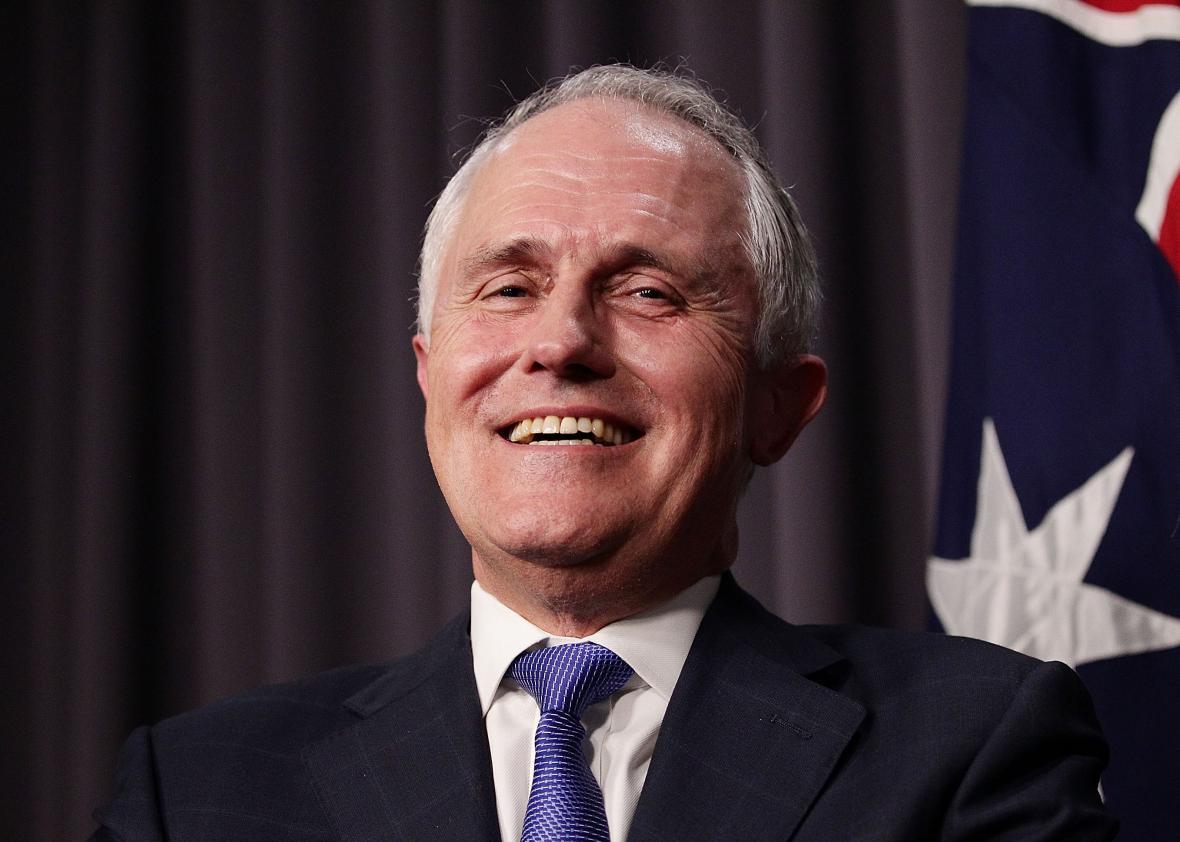Down under, they call it “front stabbing.” Malcolm Turnbull replaced the effective but highly divisive Tony Abbott on Monday to become Australia’s 29th prime miinster, the third time in five years that the country’s leader has been ousted in a surprise party coup.
Discontent had been growing within Abbott’s Liberal Party (in Australia, the Liberals are the main party of the right, with Labor on the left) over reports that he was planning to dump a number of ministers from his Cabinet. Polls also show the party likely to suffer a setback in an election in the state of Western Australia this weekend, and party faithful have been concerned about their chances in the next general election, due next year.
Abbott came into power promising to scrap the previous Labor government’s carbon tax and put in place tough new immigration policies, both of which he did successfully. But he’s been out of step with public opinion on key issues including same-sex marriage (he’s against it, most Australians now support it) and has pushed through a number of unpopular economic policies.
On Monday morning Turnbull, the communications minister and a former party leader, called a party leadership vote, beating Abbott 54 votes to 44. The combative Abbott went down fighting in characteristic fashion, warning that the prime minister’s post is a grueling job that a “febrile” and “lesser man” (meaning Turnbull) might not endure. He also warned his party against repeating the mistakes of its rival, Labor. Back in 2010, when Labor was in power, Julia Gillard ousted Kevin Rudd to become prime minister and was then herself toppled in 2013 by Rudd. The turmoil was unpopular with voters, helping Abbott sweep to power in 2013.
A former journalist and lawyer, Turnbull is positioning himself as the anti-Abbott, promising a more collaborative, less imperious style of leadership. “The Prime Minister of Australia is not a president. The Prime Minister is the first among equals,” he said in accepting the position. Turnbull had previously derided the “dumbing down” of political discourse under Abbott’s leadership. Barring more palace intrigue, he will now serve out the remainder of Abbott’s term until elections in 2016. Lasting even that long could be a challenge.
Turnbull promised on Monday a “thoroughly Liberal government,” but also has previously voiced his support for same-sex marriage and for tougher action on climate change, putting him at odds with many conservatives within his own party. When Turnbull led the Liberal party the last time, he supported the Labor-controlled government’s emissions-trading scheme, which led directly to his ouster by Abbott in 2009. He has publicly described Abbott’s climate change stance as “bullshit.”
Under Abbott, who has heavily promoted the country’s coal industry and flirted with outright climate change denialism, the country has become something of an outlier on environmental policy. Despite Turnbull’s personal beliefs, he probably won’t make many changes right away. Turnbull said he would continue to follow the government’s existing climate policies for now. (He didn’t address same-sex marriage).
As the Guardian put it, “he will have to pretend he likes the government’s climate change policy while working assiduously to make the policy work more in line with his principles without sparking yet another civil war in the Liberal party.”
Australia has now switched prime ministers five times in the last decade. (The place is starting to resemble Japan during its tumultuous six-prime-minister period between 2006 and 2012.) Before we can talk about whether Turnbull can take his party and his country in a new direction, it’s worth seeing if he can stay in power long enough to try.
